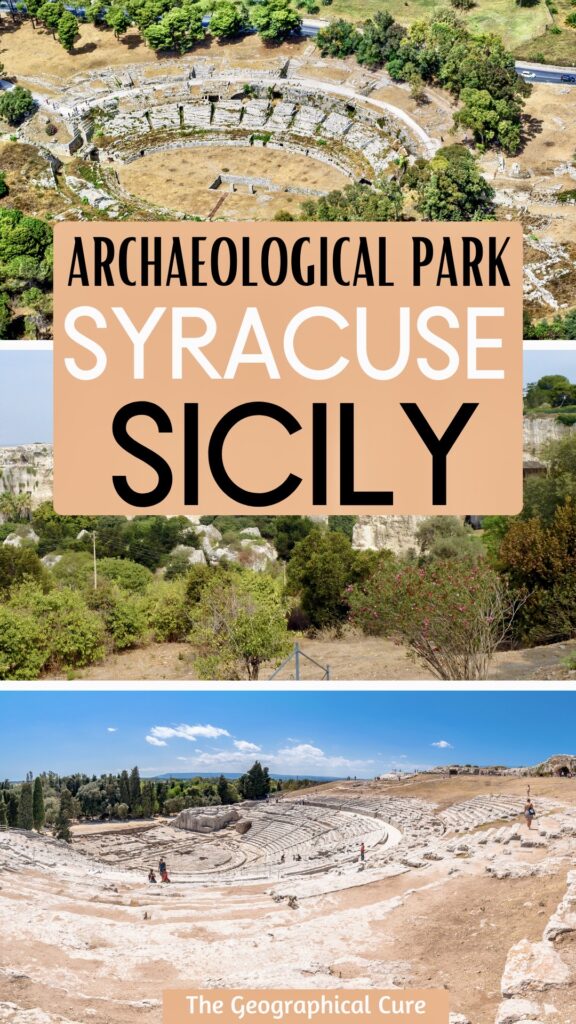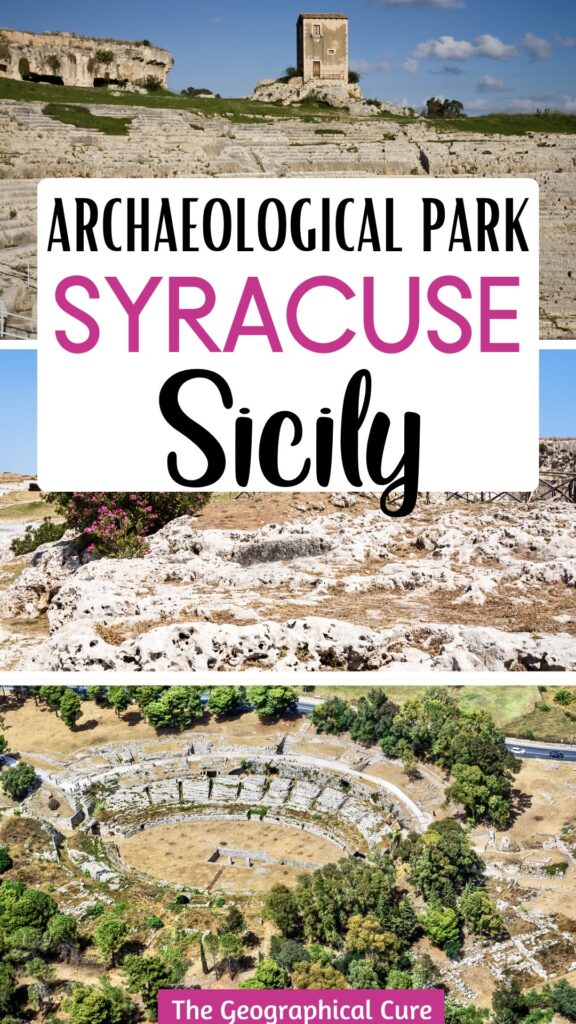Are you a classicist traveling to Syracuse Sicily? You’ll want to visit the city’s celebrated archaeological park, the Parco Archeologico della Neapolis.
Founded in 734 B.C., Syracuse was once of the most beautiful Greek cities in the Mediterranean. This UNESCO-listed park complex features one of the largest and most impressive Greek theaters in existence, as well as an elliptical Roman arena and grottos.
Here’s my guide to everything to see at the park, with must know tips for visiting. Here’s a quick glance at what you can see:
- Paolo Orsini Archaeologidcal Museum
- Greek Theater
- Sepulcher’s Street with grottos & terrace
- Latomie Quarry
- Ear of Dionysus
- Roman Amphitheater
- Altar of Heiron
- Necropolis
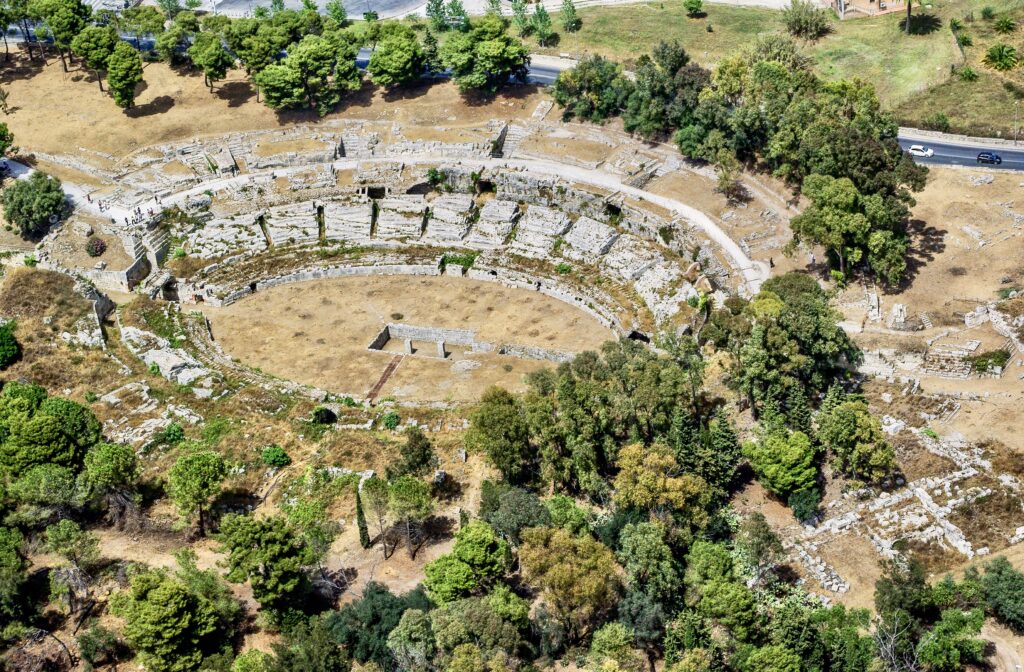
Overview Of Neapolis Archaeological Park
The park is fairly large and you may want to plan what you want to see in advance. The park has recommended 45 minute, 1 hour, and 90 minute routes. I was there a couple hours to see everything.
You should start at the Greek Theater. To get there, scan your ticket at the turnstile and proceed straight ahead. It’s not well marked. The signs suggest you turn right, but you should head straight.
After seeing the theater, you can move on to the grottos, which are the closest. Or take a longer walk to the Roman amphitheater and leave the grottos until last.
Signs direct you around. But they can seem a bit confusing at times.
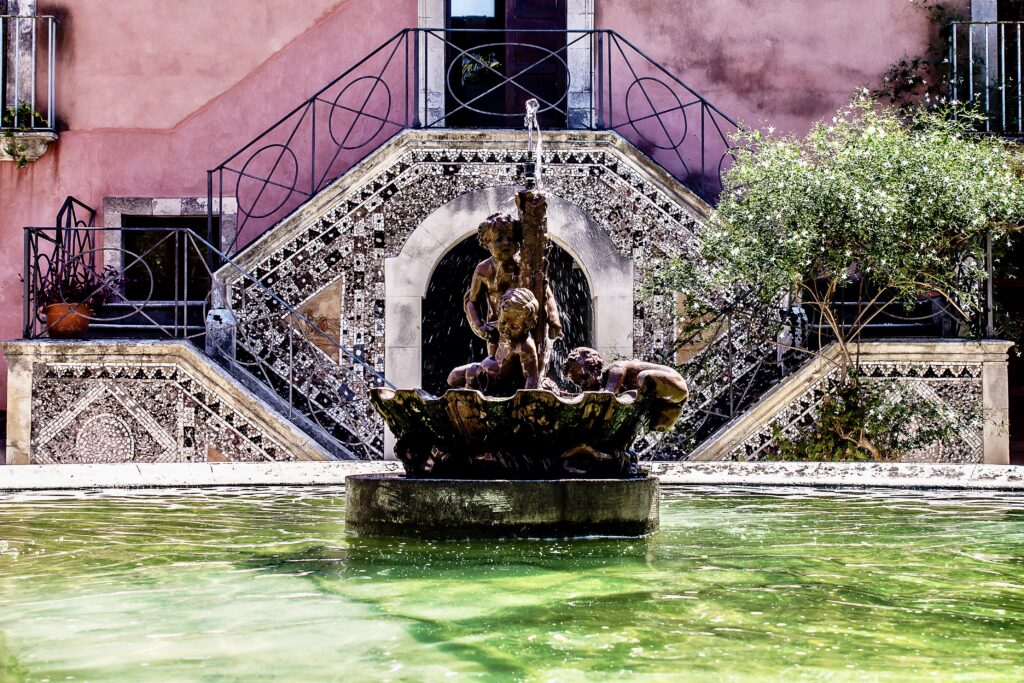
Guide To Neapolis Archaeological Park: What To See
Here are the highlights you can’t miss at Syracuse’s archaeological complex.
Paolo Orsi Archaeological Museum
It’s best to start your visit at the extremely well-curated Archaeological Museum, built in the park of the Villa Landolina.
Opened in 1988, it’s one of Sicily’s best archaeological museums, housed in a blocky modern building over 2 floors.
It chronicles the history of Syracuse from its pre-Greek indigenous foundation, to the Greek era, to Syracuse’s expansion across the island of Sicily.
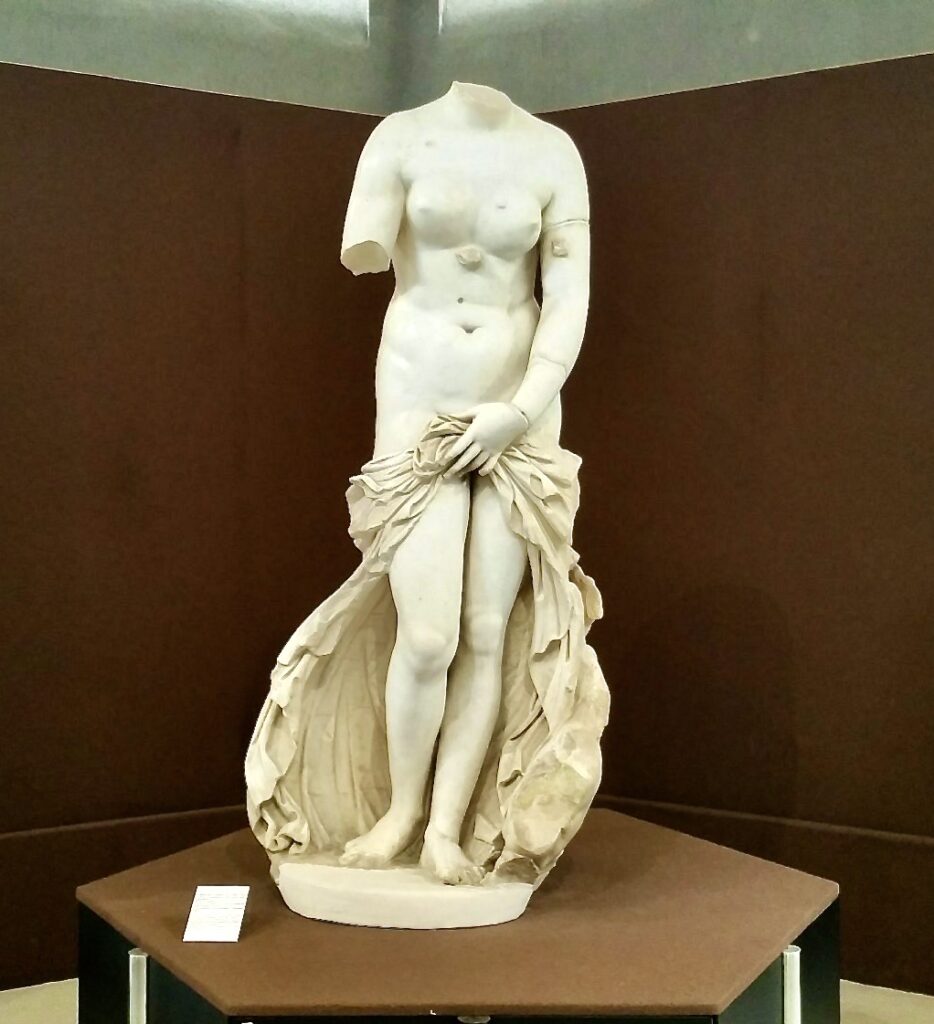
The collection includes artifacts from Eastern Sicily spanning prehistoric to Roman times. You’ll see coins, sarcophagi, pre-Greek and Greek vases, and statuary. You’ll see all the Greco-Roman deities in ceramics or sculpture.
Important masterpieces are the headless Kourus di Megara, the Sarcophagus of Adelphia, and the Venus Anadiomeme.
You’ll be given a brochure with a map of the museum, in roughly chronological order. Displays aren’t very well marked unfortunately.
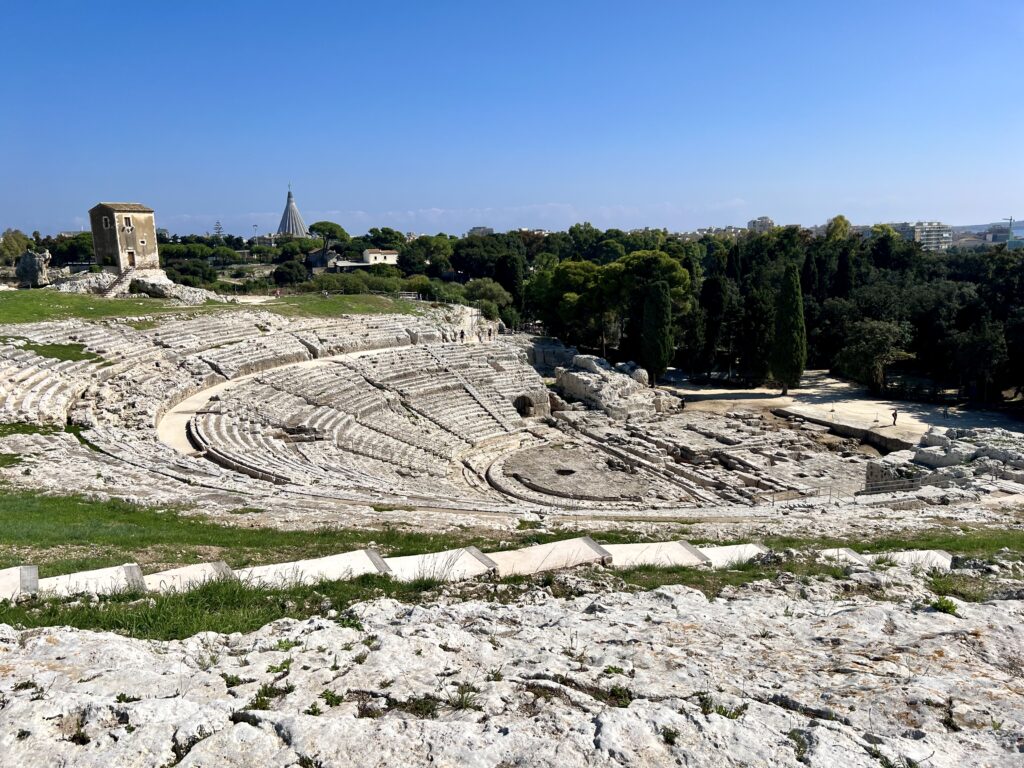
Greek Theater
Next up is the Greek Theater, ancient Syracuse’s most important monument. Built by the architect Damocopos, the theater was once the center of religious and social life.
The theater dates from 470 B.C., but Heiron II made architectural alternations in 238-215 B.C., including adding an underground passage linking the stage and the orchestra.
The theater is a grand sight, remarkably well-preserved, and you can view it from above and below. Though, sadly, you can’t walk into the area.
With 67 rows of seats, it had a seating capacity of 15,000 with the seats carved directly into the stone. (Now there are only 35 rows.) Seven staircases lead to the top.
The orchestra would have held the altar of Dionysis.
Not much is left of the stage, only incisions in the rocks. But you can see the underground passageway linking the stage and the orchestra.
In the Greek age, only men were allowed to act and they played female parts with masks. It’s known that the theater put on plays by Euripides, Sophocles, Dionysis I, and Aeschylus.
When the Romans arrived, they made some modifications. They enlarged the stage and made it semi-circular instead of horseshoe shaped. In the late Imperial age, they adapted the arena to put on water games. But it’s unclear whether any gladiatorial games every transpired.
Today, the theater still hosts performances in the summer, with wooden seats installed to protect the stone.
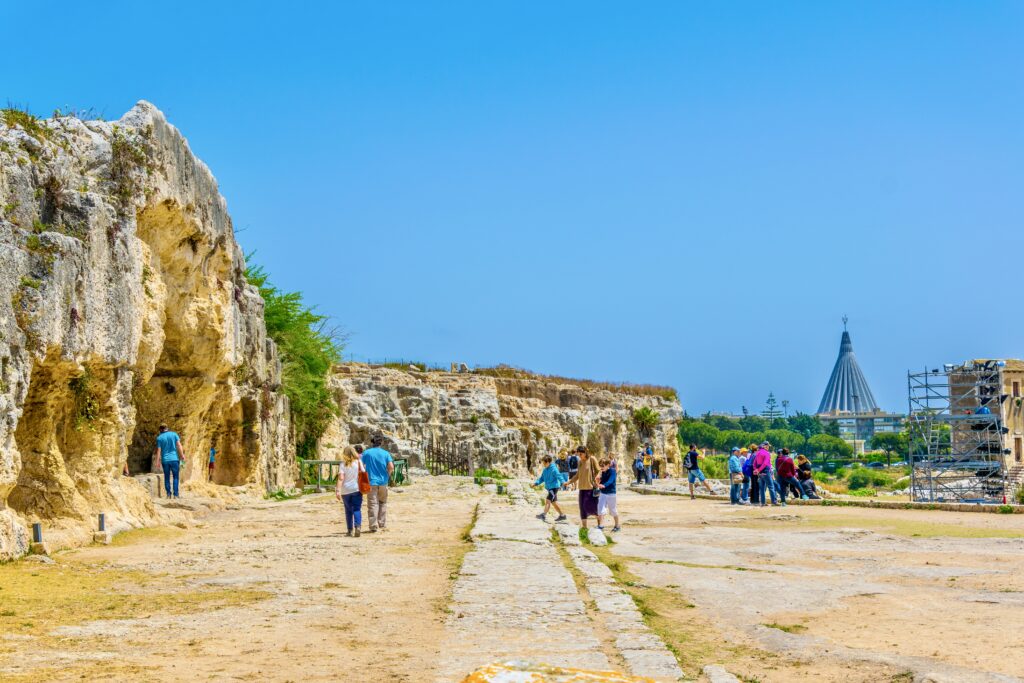
Sepulchres Street
Just behind the top edge of the theater is a terrace known as Sepulchres Street. It’s home to a series of artificial caves and niches cut into the limestone rock. You can walk right into some of them.
The largest cave is the Grotto del Ninfeo, Cave of the Nymphs. It once housed statues of muses, 3 of which are in the Orsi Museum.
Within the cave is a nymphaeum or waterfall. This presumably supplied the water for the mock naval battles Romans held in the theater.
Other minor caves along the street are burial vaults, probably from the Byzantine age. You can also see small niches, called votive squares, where objects of the deceased were placed.
From the terrace, you can see the tower of the Sanctuary of the Madonna of the Tears. It’s a modern pilgrimage church, built to commemorate the miraculous tearing of a statue of the Virgin Mary in 1953.
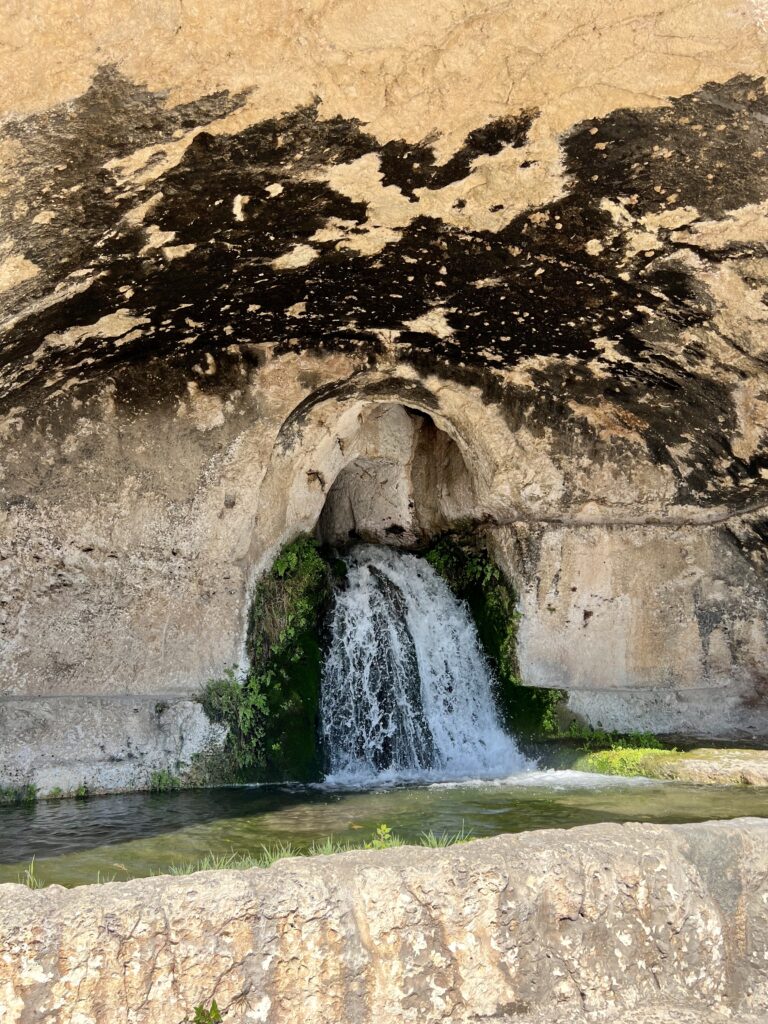
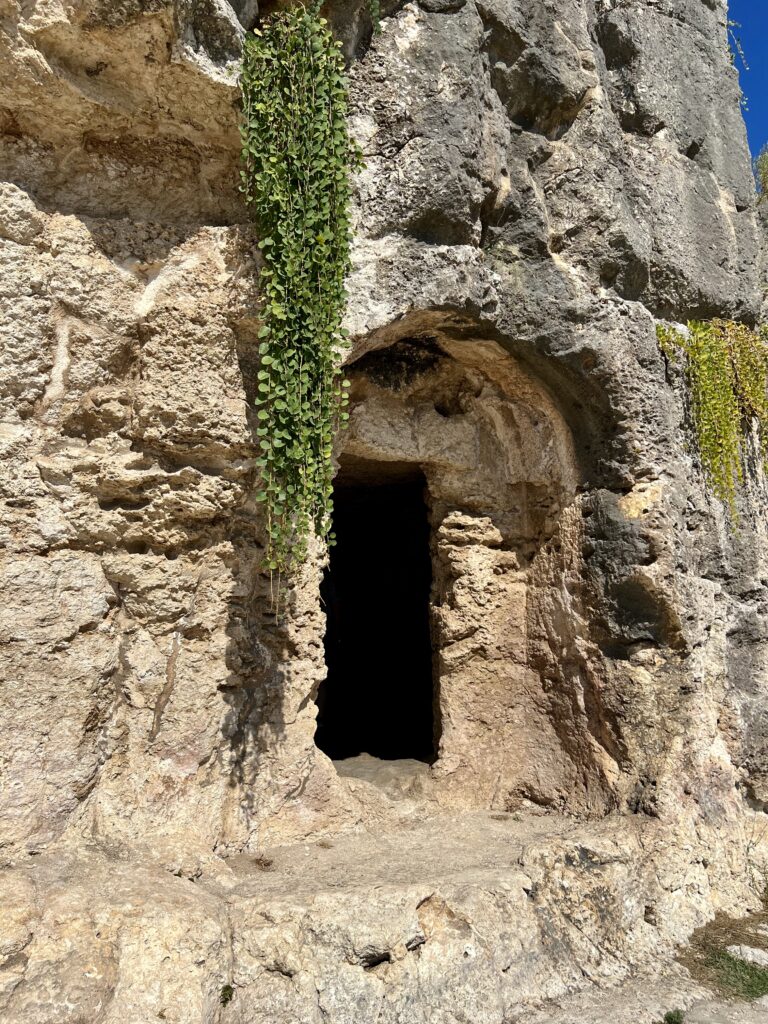
Latomie Quarry
If you follow the signs from the theater, you’ll come to the mysterious latomie. It’s a limestone quarry with a series of grottos. Initially, they provided stones to build the ancient city of Siracusa.
In the 5th century, the caves had a more grisly purpose. They served as prisons for Carthaginian and Athenian enemies. Thucydides estimated that there were once 7,000 or more prisoners held there.
Now bathed in lemon and orange trees, the caves are almost like a sunken garden. It’s hard to imagine the men that tragically died there. But their back story lends a slightly creep note to a visit.
You can visit the Latomia di Cordari, the Latomie del Paradise, the Latomie dell’Intagliatella, and the Latomie di S. Venera.
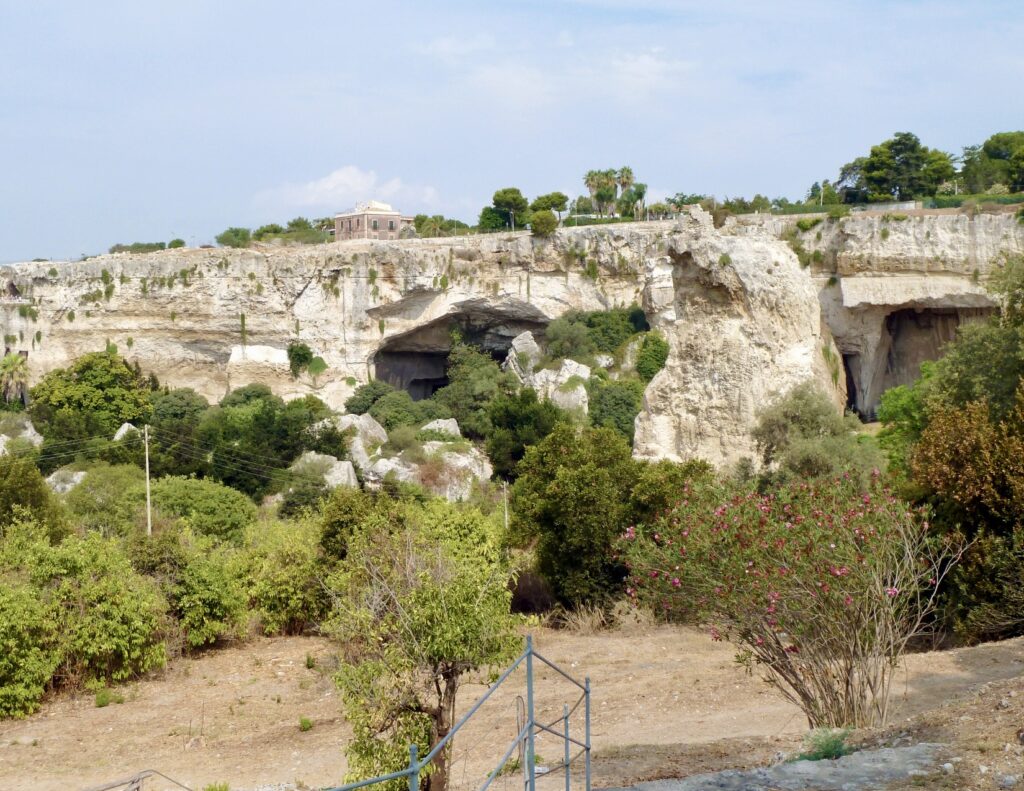
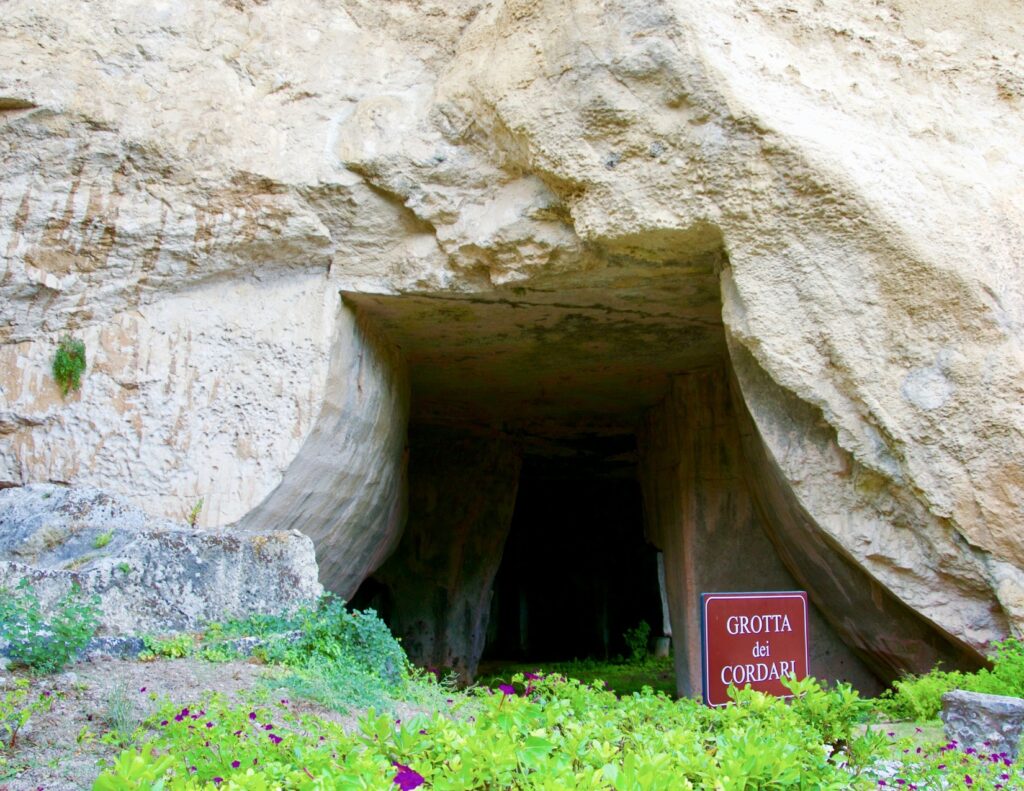
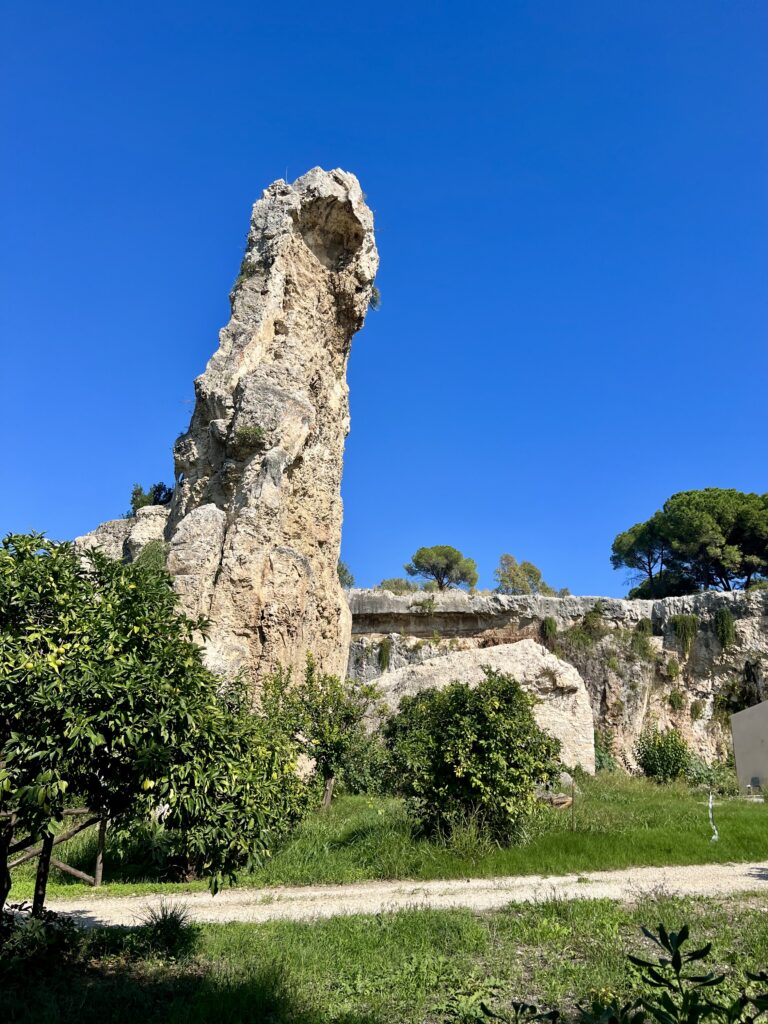
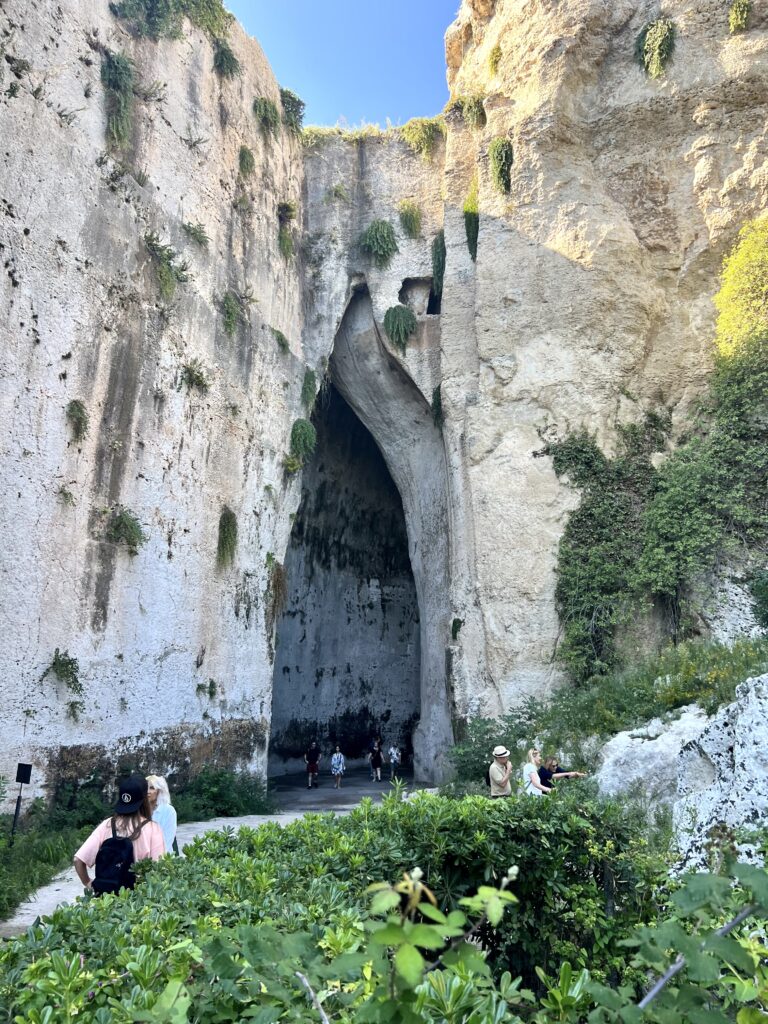
Perhaps the most well-known and visually arresting of the various grottos is the Ear of Dionysius, named for the tyrannical Roman ruler who ruled Syracuse from 432 to 367 B.C.
It’s an otherworldly soaring cavern that’s 75 feet high, converging in a pointed arch.
Legend holds that, when he visited Syracuse in 1608, Caravaggio gave it this name when he observed that the cave’s entrance resembled an enormous ear.
The Ear of Dionysis is famous for its acoustics, which echo around the cavern. It was designed that way to allow rulers to listen to the echos of their penned up prisoners and learn of any plots or dissent. You can test the acoustics out by walking in and clapping or singing a few notes.
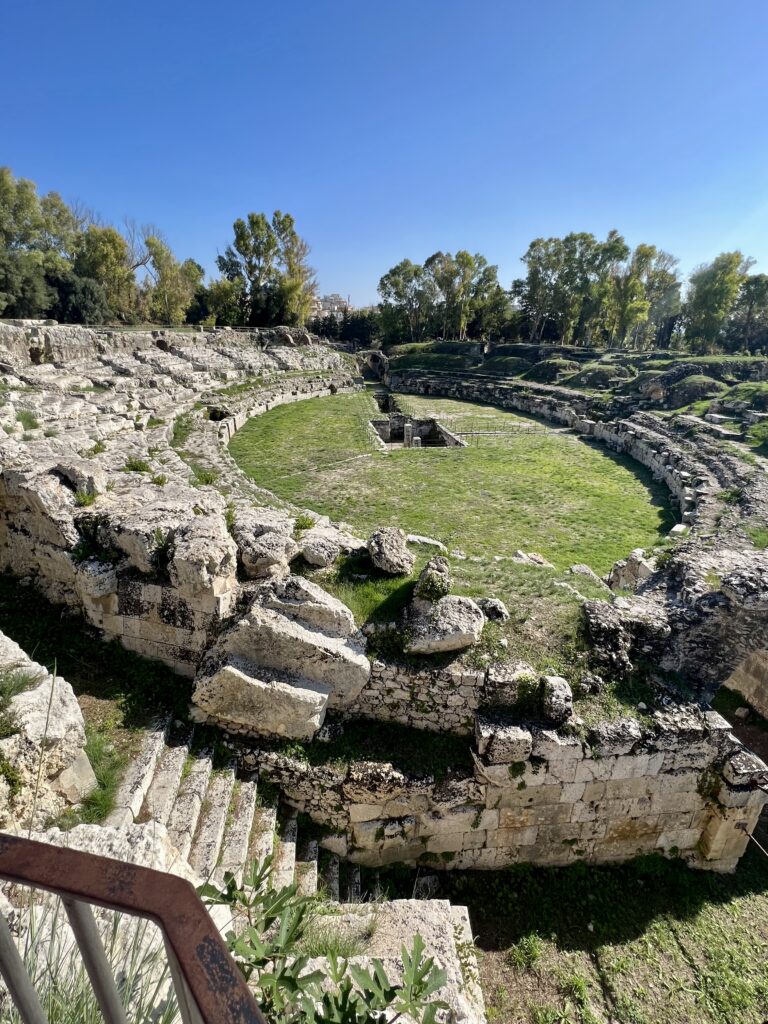
Roman Amphitheater
Your last stop will likely be at the Roman Amphitheater, which dates from 212 B.C. For the best view, head to the upper level.
Why the use of the prefix amphi? The term means “on both sides.” While the Greek built their theaters in a single semi-circle, the Romans built two theaters facing each other to have an audience in the round.
The Greeks built theaters into existing landscapes, but Roman theaters were freestanding. This amphitheater is approximately 460 feet long and 390 feet wide. There are two large entrances at both ends.
The amphitheater is slightly smaller than the Roman Arena in Verona and larger than the one in Pompeii. That makes it the third largest one in Italy, after Verona and the Colosseum in Rome.
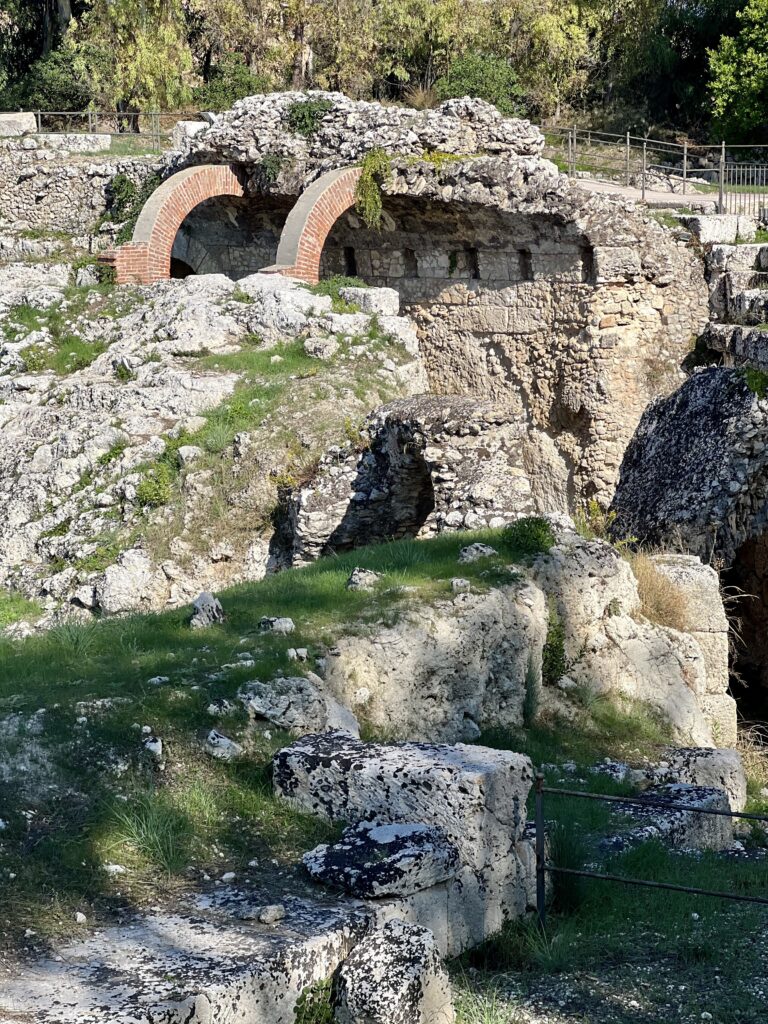
The Romans used the arena for fashionable gladiatorial combats and horse races. You can see the archways under which the losers of the battles were carted away.
At the center of the arena is a large rectangular room. Originally, it was covered and used to hide stage machinery. It may also have served as a trap door to let animals onto the arena stage.
In the 16th century, the Spaniards, indifferent to archaeology, destroyed much of the amphitheater. They used it as a quarry to build city walls for the island of Ortigia, which is Syracuse’s old town.
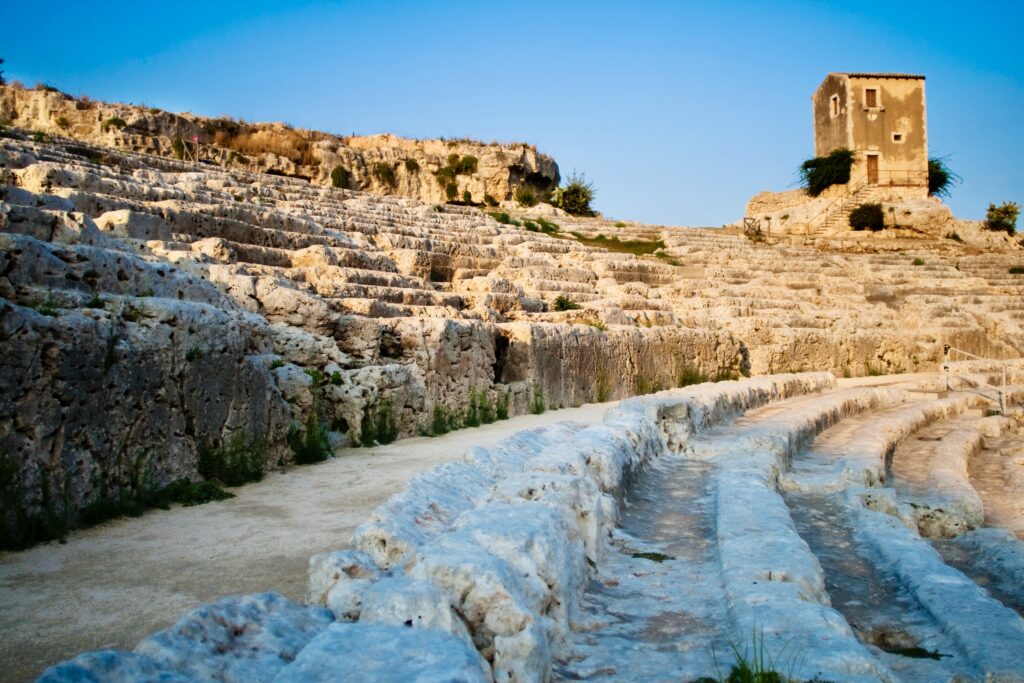
Altar of Heiron
Just to the west the amphitheater is another great Roman work, the Altar of Hieron II, dating from the 3rd century B.C. This was where, once a year in a great festival, 450 bulls were simultaneously sacrificed in honor of Zeus.
According to historical records, the altar once was the size of a stadium. It was chiseled, half dug into the rock and half built above the rock.
Once, two telemons (stone giants) stood at the north end. All that remains today is a foot of one of them.
The altar was encircled by a colonnade. At the center was a platform for the sacrifice and another raised platform to burn the corpses.
Like the theater, the Spanish plundered the altar for building materials. Today, all the remains is the massive base of the monumental altar.
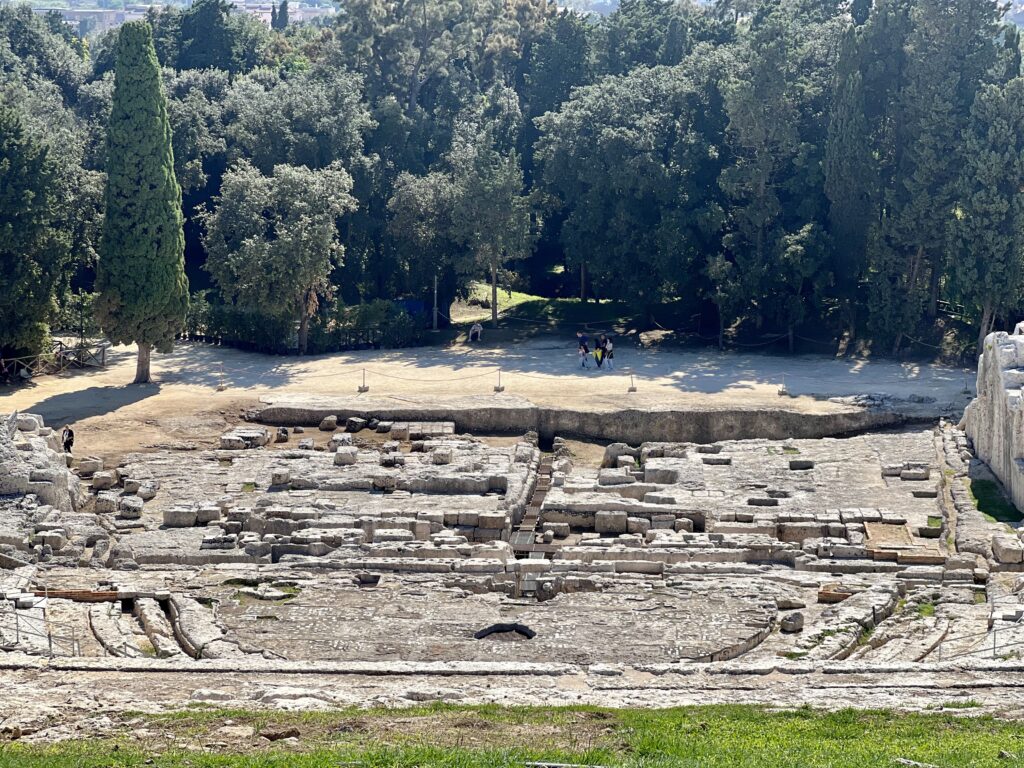
Necropolis Grotticelle
This necropolis in the park has chamber tombs from the Roman Imperial age. They are simple structures with two orders of niches to place funeral urns.
By legend, one of the chambers is Archimedes Tomb. Archimedes was Greek mathematician, physicist, engineer, astronomer, and inventor living in Syracuse.
Archaeologists don’t believe it’s his tomb. But, unfortunately, despite being a beloved native son, the Syracusans forgot where his tomb was located and we still don’t know today.
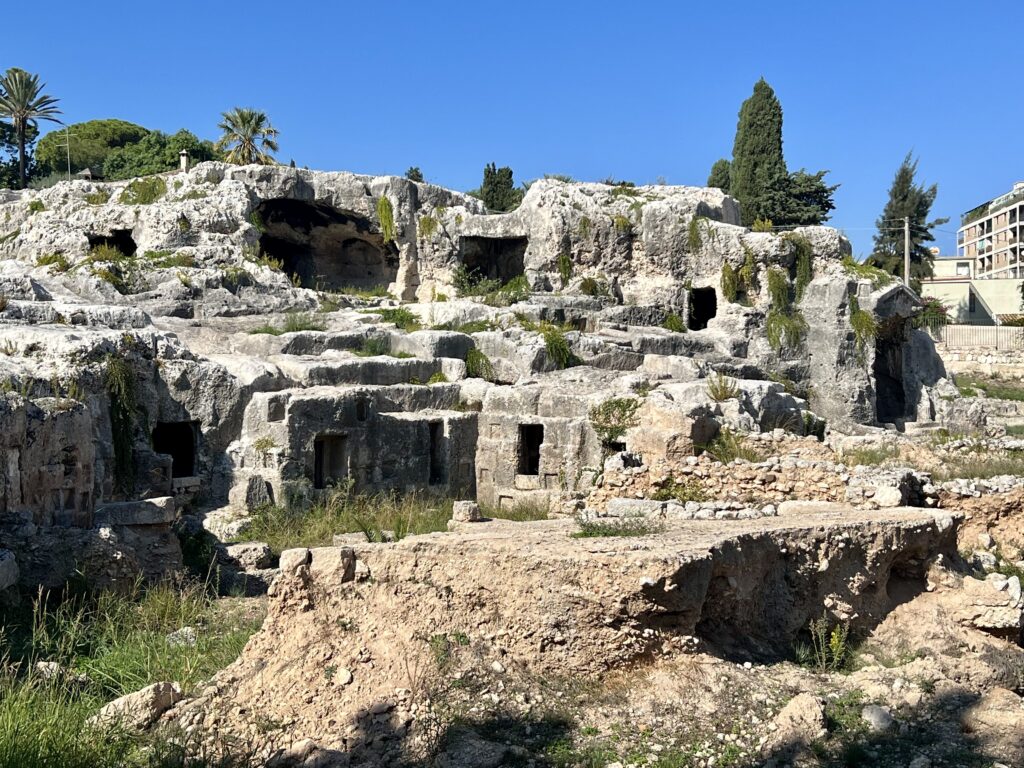
Tips For Visiting The Archaeological Park in Syracuse
Getting There
From Ortigia, you can get to the Syracuse Archaeological Park three ways — taxi, walking, or bus.
Taxis leave from the Temple of Apollo and cost 15 euros. Be careful to agree on a price before you take off in the taxi. There are also taxis waiting outside the park for your journey back to Ortigia.
Alternatively, you can embark on a 30 to 40 minute walk. I chose the latter method just to clock some miles. But it’s not a rewarding stroll. With the exception of some small Greek ruins, you’ll see nothing but urban sprawl.
You can also take minibus 2 (€1, 15 minutes) from Molo Sant’Antonio, on the west side of the main bridge. Purchase tickets on board the bus.
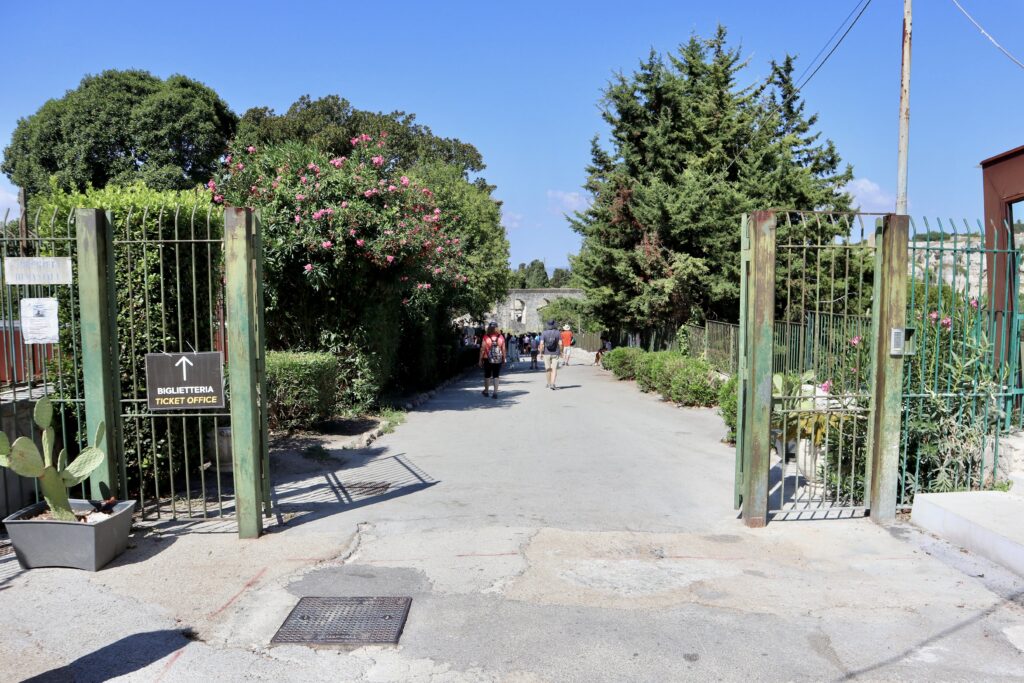
Tickets & Tours
There are two ticket offices: one is for group tickets and is located near the corner of Via Cavallari and Viale Augusto, opposite the main site. There, you’ll find stalls of vendors selling souvenirs, fresh juice, and books and a WC charging .5 euros
The second ticket booth is located on the left down the path leading to the actual ruins.
There are various tickets you can purchase. If you are short on time, you can just buy a ticket to the Greek Theater.
I bought the “complete ticket” for 15 euros. You’ll need to keep your ticket with you and handy because you’ll need to scan it several places.
You can also book a skip the line ticket in advance, which may be a good idea in high season to avoid waiting in line.
I also recommend booking a guided tour to help make the ruins come to life. If you just want to see the Greek Theater, you can book a 3 hour guided tour that includes the theater and the beautiful old town of Ortigia.

Opening Hours
The Siracusa Archaeological Park is open year round. But, according to the sign I saw, the hours seem to change each month. Click here to check out the opening hours on the website.
The park is open daily from 9:00 am to 7:00 pm. Last entry is at 6:00 pm.
Facilities
There is a cafe opposite the ticket office to grab an espresso or gelato. To the left and down after you walk in is a more elegant al fresco cafe, the Cafe Teatro, where you will also find rest rooms.
I hope you’ve enjoyed my guide to Neapolis Archaeological Park in Syracuse. You may enjoy these other Sicily travel guides:
- 2 days in Palermo itinerary
- 2 days in Syracuse itinerary
- 2 days in Trapani itinerary
- 1 day in Catania itinerary
- 1 day in Taormina itinerary
- Guide to the Valley of the Temples
- Guide to Villa Romana del Casale
- Guide to Monreale Cathedral
- Guide to the Norman Palace and Palatine Chapel
- Guide to Palermo Cathedral
- Guide to the Ruins of Segesta
If you need a guide to the Syracuse Neapolis Archaeological Park, pin it for later.

